Expert’s Rating
Pros
- Superb display
- Incredible, versatile cameras
- Strong battery life
- Exclusive software features
Cons
- Big and heavy
- Ugly design
- Slow charging
Our Verdict
The Pixel 7 Pro is the best Pixel yet with an amazing, consistent camera system, excellent battery life, and great exclusive software features – it’s just really big.
Google Pixel phones have been released annually since 2016 and have usually had one close-to-dealbreaking issue.
For the Pixel 2 XL it was a bad display, for the 3 and 3 XL it was iffy memory management, for the Pixel 4 it was dismal battery life.
2021’s Pixel 6 and 6 Pro were much better fully formed products and ushered in a new era, which is probably why their successors the Pixel 7 and Pixel 7 Pro – the latter reviewed here – are iterative updates.
The Pixel 7 Pro is the best Pixel yet and the one to buy if you want one of the best camera systems on a phone along with a top display and the most thoughtful interpretation of Android.
Though expensive at $899/£849/€899 for the cheapest model, it is well-priced compared to the rest of the market and is every bit as premium and well-built as phones from rival manufacturers.
It’s just too big and heavy – and that will be the dealbreaker this time around if it bothers you.
Design & Build
- Very big
- Well-built
- Ugly camera bar
The Pixel 7 Pro has had a slight redesign but looks a lot like the 6 Pro. It has a distinctive ‘camera bar’, a strip across the top half of the phone where the triple rear camera sit, except this year it’s coated in polished metal rather than a plain piece of dark glass.
It gives the phone a robotic look, with a pill shape for two of the lenses and a circular one for the third. I prefer the look of the 6 Pro, and this new design makes it look a little tacky – I also prefer the matt metal finish of the new design on the regular Pixel 7.
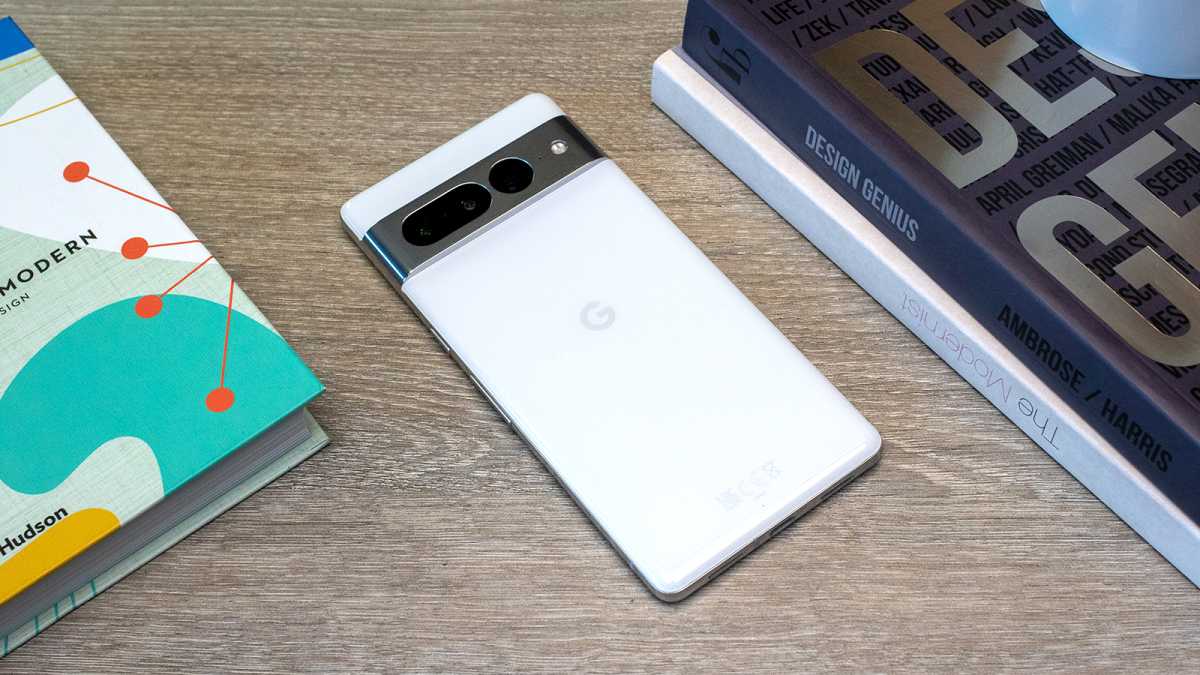
Henry Burrell / Foundry
No phone’s design has ever put me off using it though, even if it is ugly here. The issue is its size – this phone is enormous and heavy to boot at 212g.
At 162.9 x 76.6 x 8.9mm this is a thick and weighty phone in hand, pocket, and bag alike. It’s taller and thicker than the iPhone 14 Pro Max, and has practically the same dimensions as the Samsung Galaxy S22 Ultra.
The best phones are big now, and we all have to deal with it.
My review unit was the white colour, which Google calls Snow. It looks great, more phones should be white (there’s also Obsidian and Hazel, black and grey/green respectively).
Aside from the Star Trek-esque camera bar the look is crisp and clean with silver polished aluminium chassis that Google says is 100% recycled. The rails are broken only by a USB-C port, mic, and speaker on the bottom, a volume rocker and power button on the right edge, and a small mic on the top. The left edge has a single SIM slot, and there’s no expandable storage.
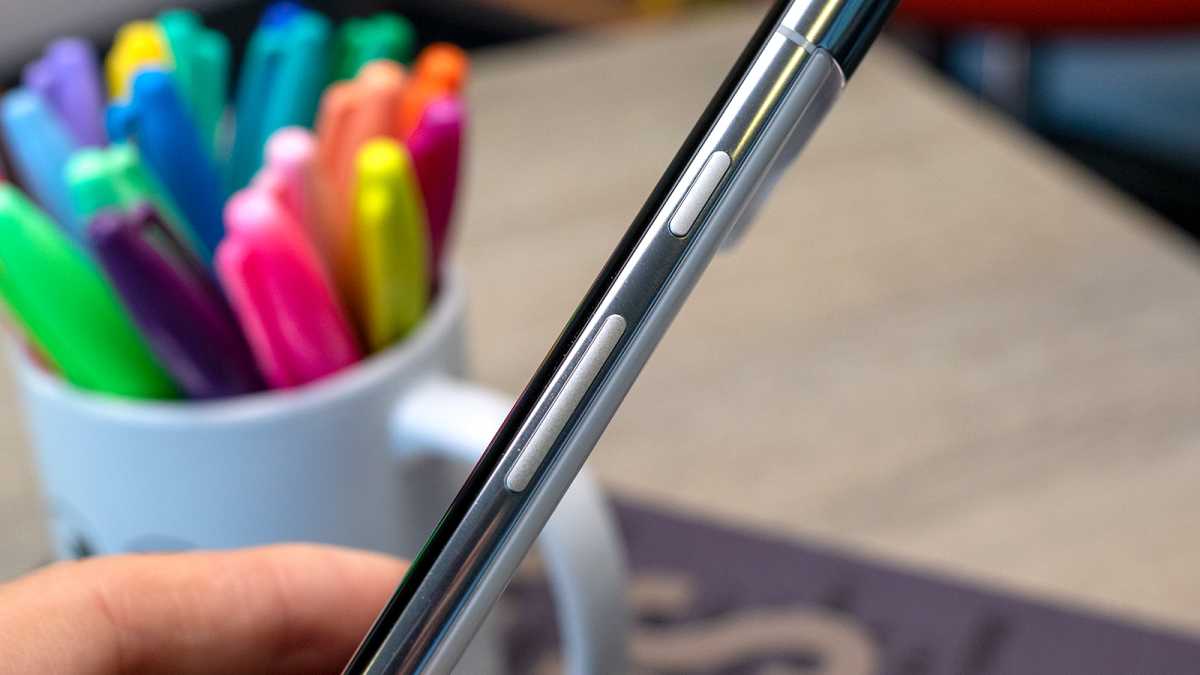
Henry Burrell / Foundry
The front and back glass is made from tough Gorilla Glass Victus, though my colleague Chris Martin found his regular Pixel 7 cracked after hitting the tarmac from a short height. If free from cracks, the phone is IP68 rated for dust and water resistance.
It’s undoubtedly a well-made phone that feels more solid in build than the Pixel 6 Pro, but I still prefer a smaller device than this absolute behemoth.
Screen & Speakers
- Superb 6.7in screen
- Variable 120Hz panel
- Stereo speakers
Google has hit a six with the Pixel 7 Pro’s screen, one of the best I’ve used on a phone. Displays seem to get crisper and brighter every year somehow, and side by side with the Pixel 6 Pro, the 7 Pro improves in both areas.
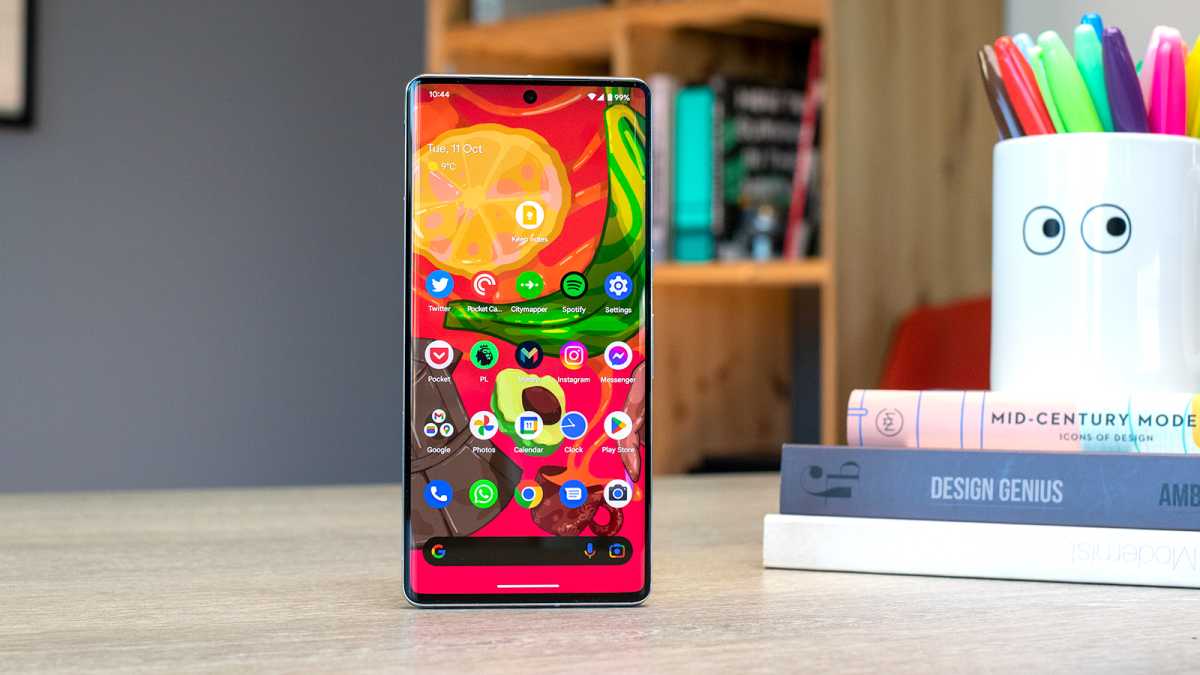
Henry Burrell / Foundry
It’s a 6.7in Quad HD+ panel with a resolution of 3120 x 1440. It is also capable of 120Hz refresh rate, and look superbly smooth – better to my eyes than Apple’s iPhone 13 Pro or 14 Pro. Like those phones, the 7 Pro uses LTPO tech to scale the rate down when not needed to conserve battery life.
Another battery saving option lets you run the display at 1080p, but everything looks best when at 1440p and 120Hz. Along with the camera, it’s the best reason to get the 7 Pro instead of the regular 7.
Interestingly Google sets the phone to dark mode out of the box. I prefer running phones in dark mode as the blue light on my eyes is less intense, and with OLED displays such as this, darker colours use less battery.
The screen curves at the edges very slightly which is common on large phones, but the regular Pixel 7 has a flat screen if you prefer.
While I do not condone blasting music out of phone speakers on any occasion, the Pixel 7 Pro sounds quite good if you do. At the highest volumes, it’s not as well rounded as the iPhone 14 but it’s fine for podcasts or watching YouTube.

Henry Burrell / Foundry
Specs & Performance
- Google Tensor G2 chipset
- 12GB RAM
- 128/256/512GB storage
This is the second year Google has used its in-house Tensor chipset it’s made with Samsung. The G2 in the 7 Pro is solid but is less powerful than the A16 found in the iPhone 14 Pro for raw compute power. The below graphs show it compared to that phone and other expensive Android phones.
It’s more than enough oomph for me and probably you though, handling multiple apps with ease and chewing through high-end games without so much as a stutter.
Instead, the marginal improvements from last year’s Tensor are on important things like battery life, security, photo processing, and smart software features. It succeeds on all these fronts and is a very stable phone day-to-day with no performance issues.
All models of the Pro come with 12GB RAM and either 128- or 256GB storage (there’s also a 512GB option in the US). This is not expandable so you might want to pay extra for the larger capacity. You can use two phone numbers with the single SIM slot paired with an eSIM.
Software & Features
- Android 13
- Pixel exclusive features
- Three Android updates
- Five years of security updates
Tensor is at its best paired with Google’s flavour of Android, which is one of my favourites – vanilla. Android 13 on the 7 Pro runs smoothly and with the character and playfulness lacking in most phone operating systems, which are usually austere and serious.
It has lovely wallpaper options with colour palette picking to fine tune and personalise your phone thanks to Material You, while the always-on display remains simple and doesn’t drain the battery.
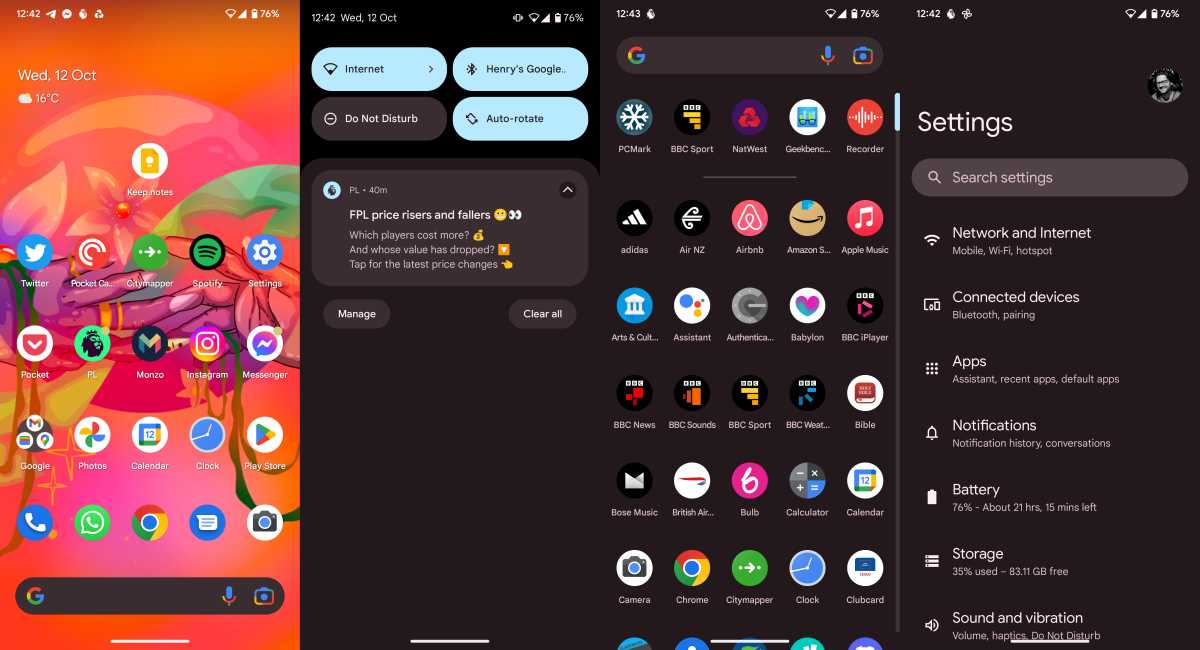
Henry Burrell / Foundry
The on-device processing is a huge advantage of the Pixel. This means it does cool things like transcription and dictation without the need to connect to the internet. This allows the phone to be useful when out of signal and in airplane mode while keeping some of these processes off Google’s servers.
For instance, you can use Live Transcribe to transcribe someone’s speech in real time if you are hard of hearing to keep up with a conversation. The Google Recorder app can transcribe offline too and create a transcript that you can choose to keep offline or backup to your Google account.
You can also view transcripts of audio messages sent via Google’s Messages app, or use the Assistant Voice Typing to dictate messages into any messaging app. Google says the more you use the features, the more intelligent they get. I find the dictation about on par with the version on Apple’s iOS.
Google’s software is excellent at stopping spam calls from ever getting through, though I did get some spam text messages when texting the phone having received none when reviewing an iPhone in the weeks previously. I also appreciate that Google is using AI to improve the audio of voice calls when a lot of manufacturers ignore the actual phone part of a smartphone.
You also get new features like nighttime cough and snore detection and – finally – an option for face unlock as well as the in-screen fingerprint reader. The former works only to unlock the phone, but if you select only show notification content when unlocked, the Pixel acts like an iPhone where it only shows your notifications when it has recognised your face.
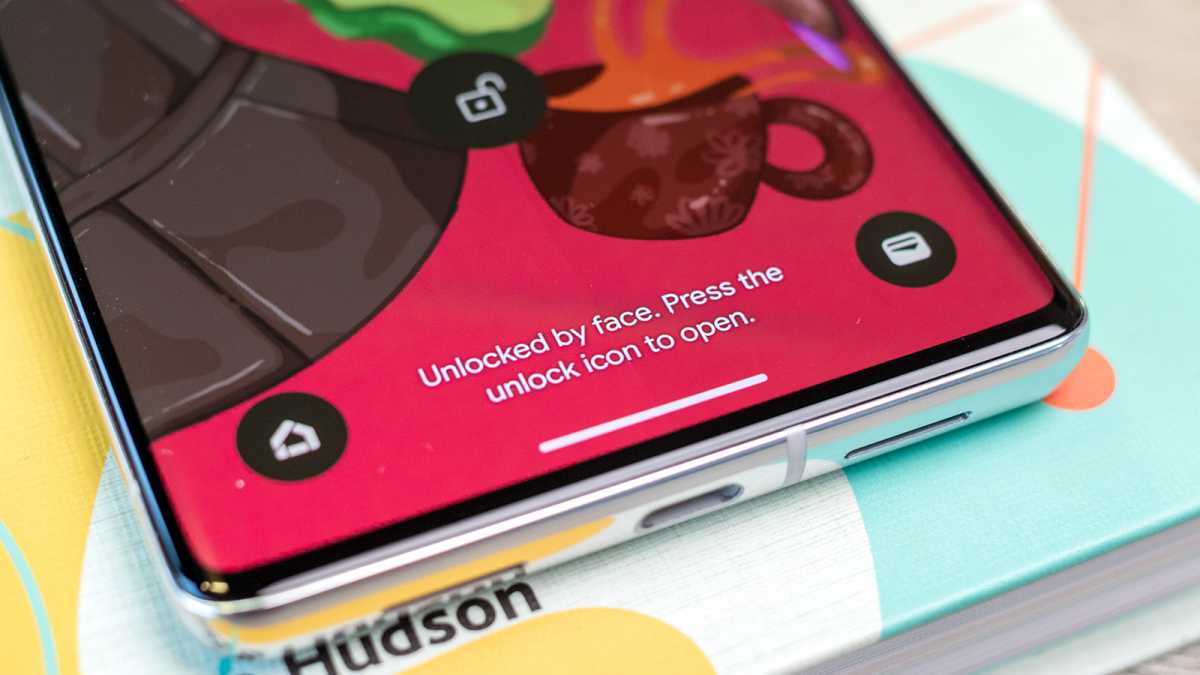
Henry Burrell / Foundry
For everything else like banking biometrics, the fingerprint sensor is reliable and improved over the dodgy one on the 6 Pro.
Google promises five years of security updates for the Pixel 7 Pro, which means it’s covered until late 2027. That’s not bad going. It’s a shame there’s only three years of platform updates though, so the phone will get Android 16 in 2025, but no more.
Samsung and Apple offer longer OS update support on most of their phones, so it’s worth bearing in mind if you want the very latest software features over time.
Cameras & Video
- Superlative main 50Mp sensor
- Incredible dynamic range
- Excellent processing
- RAW format option
The Pixel 7 Pro is an absolute joy to take photos with. In my time with it I’ve taken shots I confidently would not have gotten from an iPhone, particularly in instances of fast-moving subjects.
The main sensor is one of the best on a phone, with exquisite detail captured and amazingly competent dynamic range. At a wedding, the Pixel froze confetti throwing in time, each petal perfectly crisp.
I prefer the contrast Google puts in the processing of its images to other manufacturers. It is a moodier, stylistic choice but one that evokes film photography in a way Apple’s processing does not. The iPhone 14 takes great pictures but over-sharpens them. Samsung over-saturates colours. I was happier with the Pixel’s shots and enjoyed optionally shooting in RAW and editing them afterwards on my desktop.
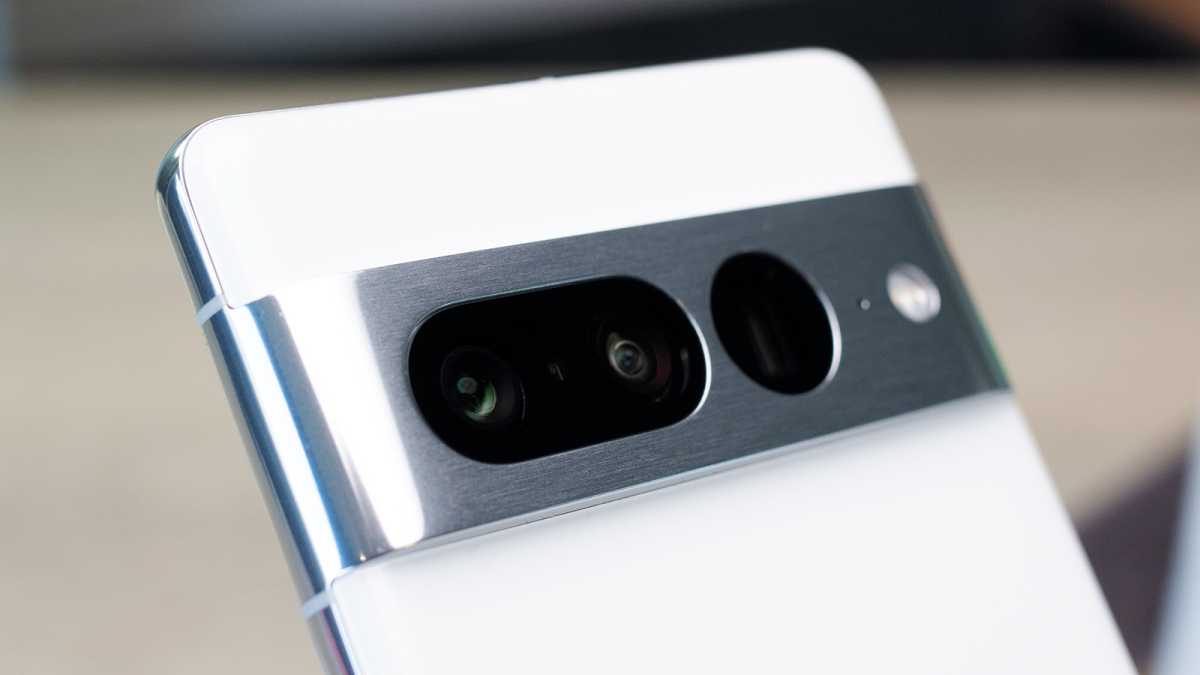
Henry Burrell / Foundry
That said, I found the Vivo X80 Pro outperformed the Pixel in some instances. The X80 consistently manages to pick out details the human eye can see but phones struggle with, such as shooting blue sky through a window in a darker room. The Pixel (and iPhone) often can’t pick out blue sky, but the Vivo does every time thanks to its larger main sensor. Side by side, the Pixel manages better details on subjects overall.
The Pixel 7 Pro’s cameras are very similar to those on the Pixel 6 Pro, with a 50Mp main lens with f/1.85, a 12Mp ultrawide with f/2.2 and autofocus, and a 48Mp telephoto lens with f/3.5. The latter gets a small upgrade and can now zoom to 5x optical, or up to 30x digital with Google’s Super Res Zoom software that adjusts for hand shake.
If you zoom to between 2.5x and 5x, the phone takes a photo with both the main and telephoto lenses and combines them to produce one image. A lot of what Google does with the cameras on the Pixel isn’t simply taking a shot with one lens – it’s using all the lenses and lots of compute power from the Tensor G2 to stitch them together and render a scene closer to what a DSLR might do without the software trickery.
5x images in good lighting are excellent, but in lower light it struggles for detail and there is grain. Zoom further and results are also pretty good. I took a 30x shot of St Pancras Hotel’s clock tower and it was far better than I thought it would be (see in below slideshow). The 10x shot is better, very crisp and clear. This is a fine digital zoom even though optical is preferable, such as the 10x optical on the Galaxy S22 Ultra.
The ultrawide’s new trick is taking macro shots that can stay in focus from up to three centimetres away. The mode kicks in automatically when you hold the camera close to a subject. It’s a neat trick, but the iPhone 13 Pro and 14 Pro’s results can get closer and are more impressively sharp.
The front facing camera is a 10.8Mp f/2.2 lens sat in the centre at the top of the screen. It’s perfectly serviceable for selfies and video calls, and I like its 92.8 degree wide field of view.
Pixel favourites like Night Sight and Astrophotography also still impress, the former doing a better job of unblurring. This is an all-round camera system that will serve you incredibly well, up there with the S22 Ultra and X80 Pro for sheer versatility. But of all these phones, the Pixel is the most reliable, which counts for a whole lot. I always trusted it to get a superb image.
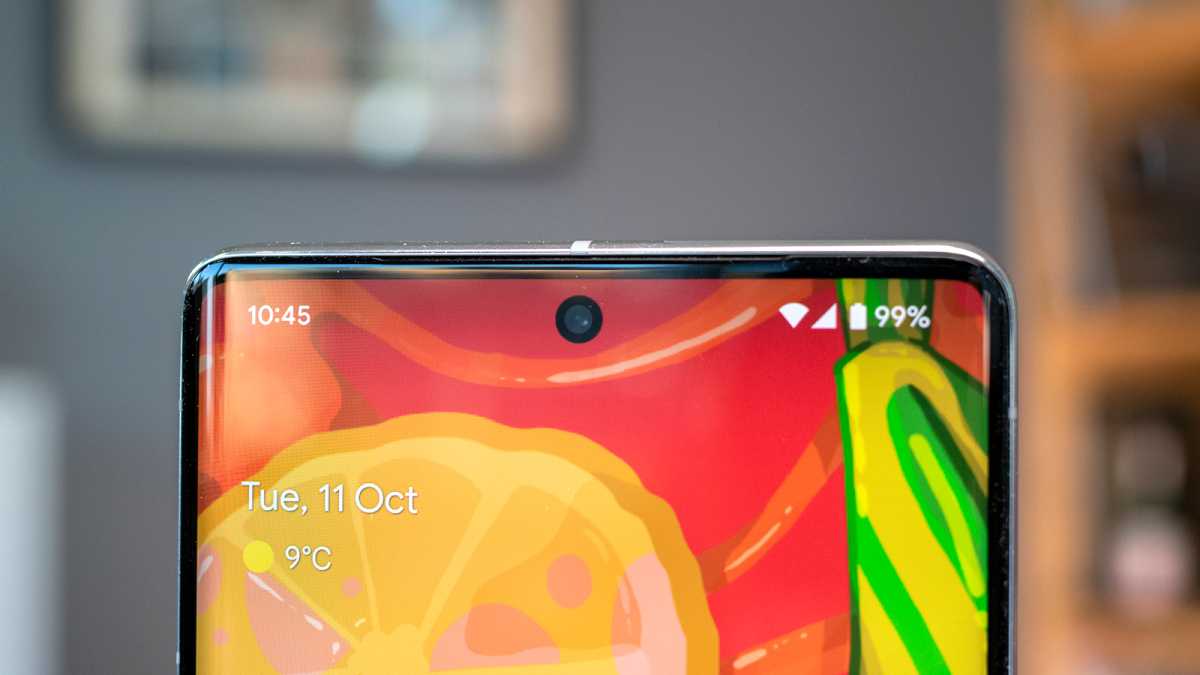
Henry Burrell / Foundry
Google directly copied Apple’s Cinematic Mode by introducing the Cinematic Blur’s video mode on the 7 Pro. It blurs the background behind your subject when recording video and, like Apple’s, can focus on either plane and switch between the two. It works, as still does the clever Magic Eraser feature that you an use to erase people or things from photos if you feel they are spoiling the shot.
Video capture in general is solid, and you can record in 10-bit HDR in 4K up to 30fps, or 60fps with HDR turned off.
Handier is the automatic Face Unblur feature that is tagged on a photo if it steps in, but does exactly what it says to better your shots. New and old photos can also be manually unblurred with Photo Unblur – being able to unblur any older photo is an exclusive feature to the Pixel 7 phones.
Battery Life & Charging
- 5000mAh
- 2-day battery life
- Slow ’30W’ charging
- Wireless and reverse charging
Year over year one of the clearest improvements over the Pixel 6 Pro is battery life. Google really stretches the large 5000mAh battery on the 7 Pro and it never died on me. In fact, I often ended a full day of use with over 40% of power left and the phone regularly lasted me well into a second day.
Though charging is only 23W when wired even if you use Google’s own 30W charger, which is slow compared to other Android flagships, it can get to 50% charge in 30 minutes, which is very handy and enough fast charge smarts for most people. There’s also wireless charging at a relatively slow 23W speed with the Pixel Stand 2, and reverse wireless charging for slowly topping up other phones or quickly topping up the smaller batteries of wireless earbuds or smartwatches, if compatible.
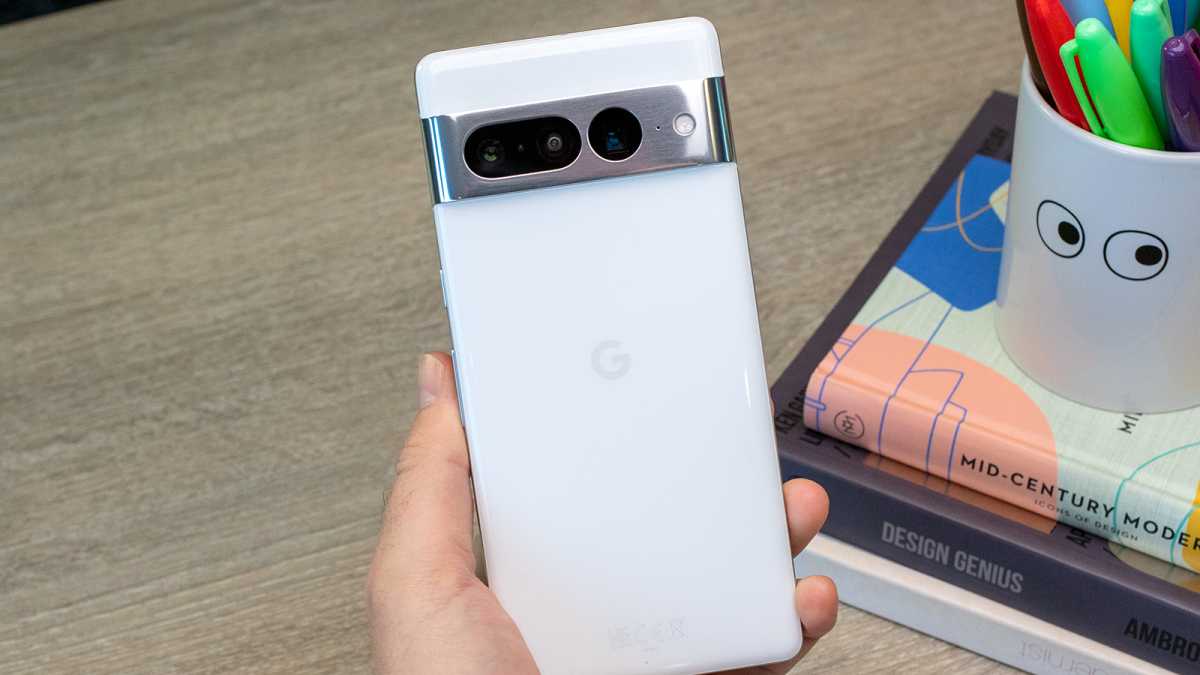
Henry Burrell / Foundry
You might think the most expensive smartphones should have the best battery life but the opposite is usually true – the more powerful, the shorter the longevity, usually. I’m happy the 7 Pro bucks this trend, and it almost makes up for how enormous the thing is.
Price & Availability
The Pixel 7 Pro costs $899/£849/€899 for the 128GB model which is expensive, but is actually a very reasonable and competitive price compared to the competition. It goes up to $999/£949/€999 for the 256GB, and in the US there’s a 512GB option for $1,099. You just get the phone and a USB-C cable in the box, along with a USB-A adapter to help move data from your old phone.
You can buy it in the US, UK, Canada, and Europe from the Google Store. It’s also available in a few other regions such as Ireland, Japan, and Australia.
The base price is similar to the $799/£849/€1,019 iPhone 14, which only has a 60Hz screen, no telephoto lens, and can’t shoot photos in RAW (much like the pricier iPhone 14 Plus).
If you go for the $999/£1,099/€1,329 iPhone 14 Pro you’re getting the best Apple has to offer, but at a premium to what Google is selling the Pixel for.
The Samsung Galaxy S22 Ultra is a mad $1,199/£1,149/€1,279, but you should be able to find it at a discount given it’s a few months old, but it shows the Pixel 7 Pro is a good deal in comparison to the competition.
You could also opt for the regular Pixel 7 which at $599/£599/€649 is a phenomenally good deal.
Check out our best phone and best mid-range phone charts for more top phones.
Verdict
The Google Pixel 7 Pro is one of the best phones of 2022 whose only downside is its cumbersome size and weight (and slightly ugly design unless you disagree with me on that).
If you can deal with that, you’ll be very happy with the most versatile and consistent camera setup on a phone, a wonderful display, and the smartest, most useful version of Android.
It’s not the most powerful phone you can buy but the Tensor G2 excels at on-device features that differentiate it from other products, while the battery life is genuinely able to stretch to two days. Charging could be faster, though.
With security updates till 2027 and a price that firmly undercuts rival brands, the Pixel 7 Pro comes highly recommended. If you want to get many of the same features for less, the regular Pixel 7 is cheaper.
Specs
- 6.7in QHD+ 120Hz LTPO OLED
- Google Tensor G2 chipset
- 12GB RAM
- 128/256GB non-expandable UFS 3.1 storage
- 5,000mAh battery
- 30W wired charging
- Wireless charging
- 50Mp f/1.85 main camera
- 12Mp f/2.2 ultrawide camera.
- 48Mp f/3.5 telephoto camera
- 5x optical zoom
- 10x zoom and Super Res Zoom up to 30x
- 10.8Mp f/2.2 front camera
- 5G
- Wi-Fi 6E
- Bluetooth 5.2
- IP68
- Gorilla Glass Victus
- 162.9mm x 76.6mm x 8.9mm
- 212g




